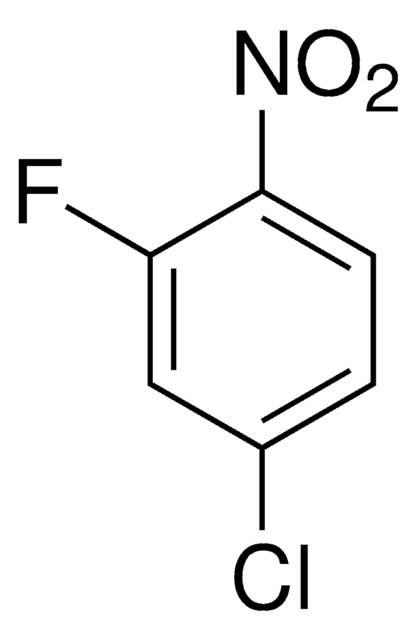Wichtige Dokumente
D68401
2,4-Dichlor-1-Nitrobenzol
97%
Synonym(e):
1,3-Dichlor-4-nitrobenzol, asym.-Nitro-m-dichlorbenzol
About This Item
Empfohlene Produkte
Assay
97%
Form
solid
bp
258 °C (lit.)
mp (Schmelzpunkt)
29-32 °C (lit.)
SMILES String
[O-][N+](=O)c1ccc(Cl)cc1Cl
InChI
1S/C6H3Cl2NO2/c7-4-1-2-6(9(10)11)5(8)3-4/h1-3H
InChIKey
QUIMTLZDMCNYGY-UHFFFAOYSA-N
Suchen Sie nach ähnlichen Produkten? Aufrufen Leitfaden zum Produktvergleich
Signalwort
Danger
Gefahreneinstufungen
Acute Tox. 3 Dermal - Acute Tox. 4 Oral - Aquatic Chronic 2 - Carc. 1B - Muta. 2 - Skin Sens. 1B
Lagerklassenschlüssel
6.1C - Combustible acute toxic Cat.3 / toxic compounds or compounds which causing chronic effects
WGK
WGK 3
Persönliche Schutzausrüstung
dust mask type N95 (US), Eyeshields, Gloves
Hier finden Sie alle aktuellen Versionen:
Besitzen Sie dieses Produkt bereits?
In der Dokumentenbibliothek finden Sie die Dokumentation zu den Produkten, die Sie kürzlich erworben haben.
Kunden haben sich ebenfalls angesehen
Unser Team von Wissenschaftlern verfügt über Erfahrung in allen Forschungsbereichen einschließlich Life Science, Materialwissenschaften, chemischer Synthese, Chromatographie, Analytik und vielen mehr..
Setzen Sie sich mit dem technischen Dienst in Verbindung.












